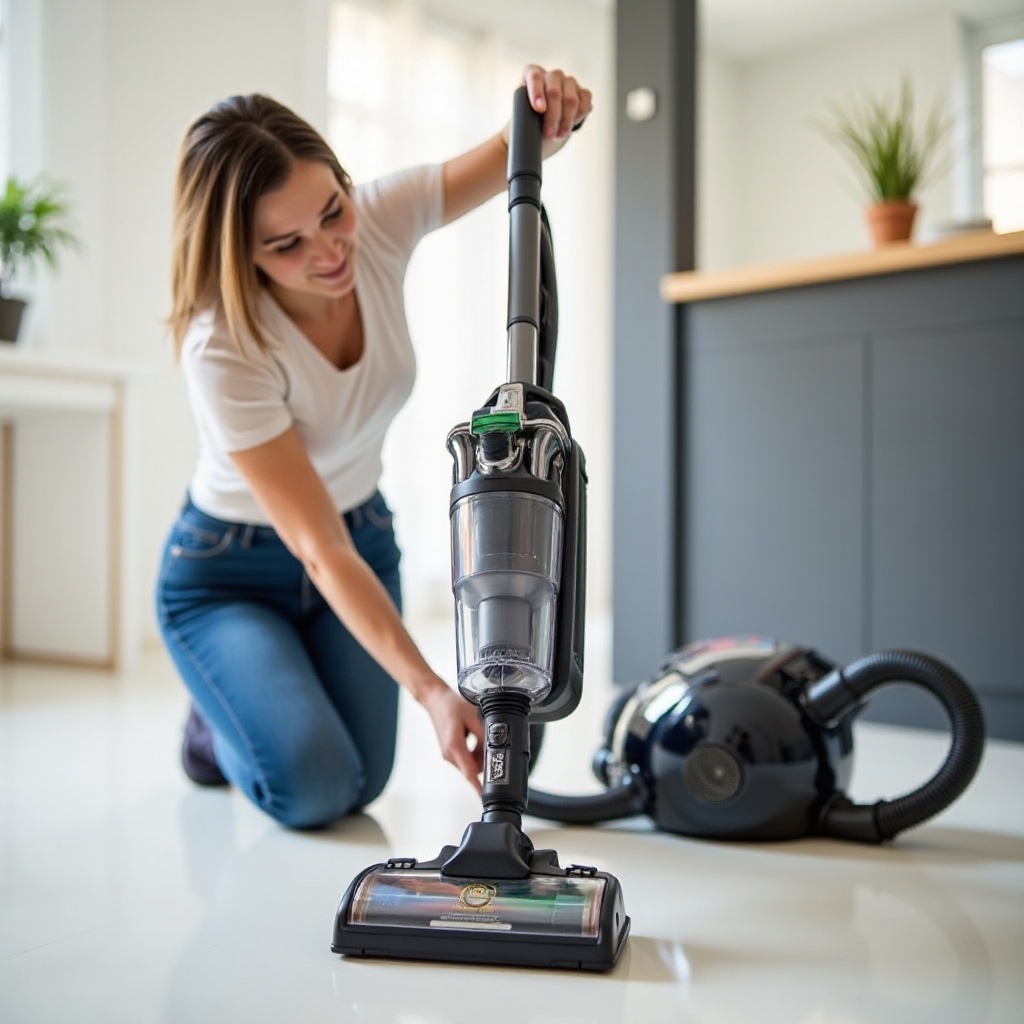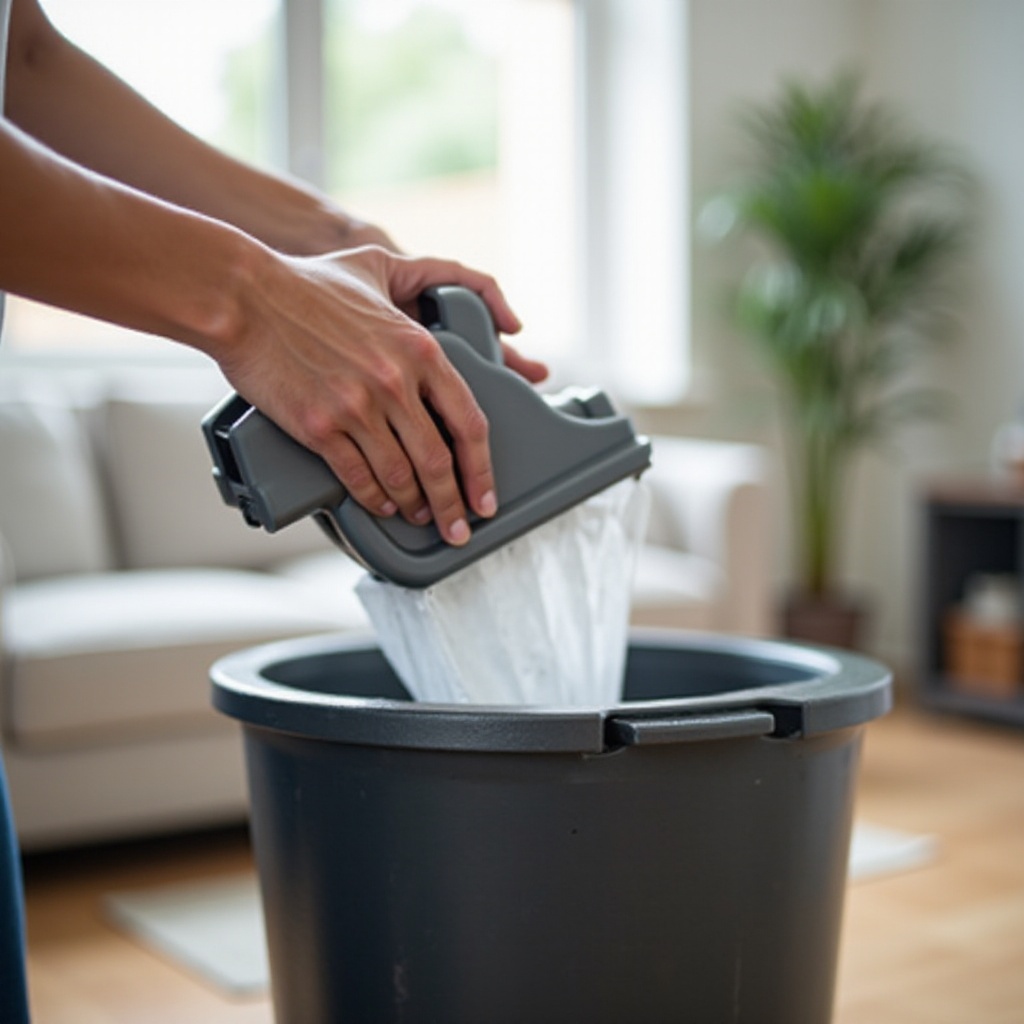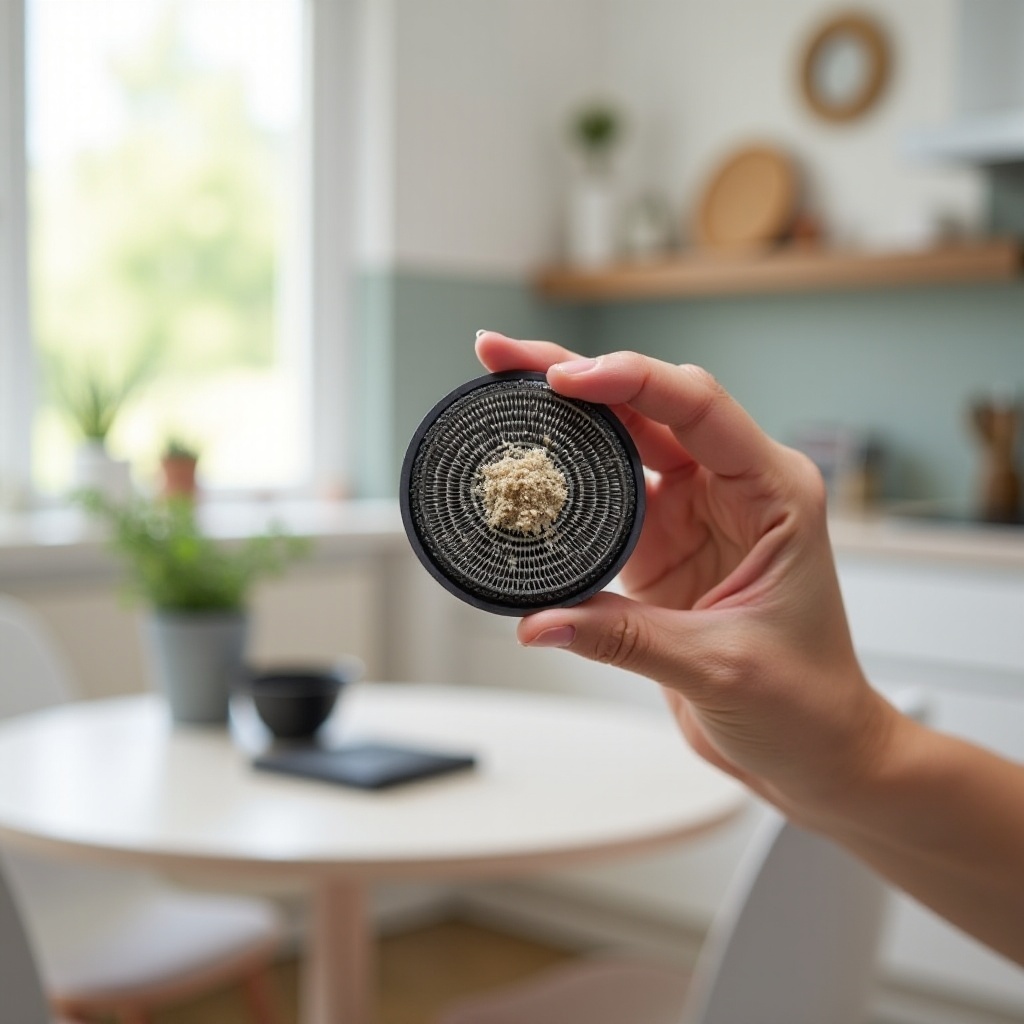Introduction
A smelly vacuum cleaner can turn a simple chore into an unpleasant task. The odorous issue often leaves you wondering whether the vacuum is actually cleaning or just spreading the bad smell around your home. If you’re tired of plugging your nose every time you clean, it’s time to address the root of the problem. In this guide, we’ll walk you through the essential steps to eliminate the bad odor, ensuring your vacuum not only performs well but also leaves your home smelling fresh.
Cleaning a vacuum cleaner might seem straightforward, but it involves several specific steps. Identifying the source of the odor is crucial for effective cleaning. Once located, thoroughly cleaning various components like the dustbin, filters, brush roll, and hose will help in eliminating the unwanted smell.

Identify the Source of the Smell
The first step in eliminating the odor is to pinpoint its source. The smell can emanate from various parts of the vacuum cleaner, each requiring a different cleaning approach. Typically, trapped dust, hair, food particles, or mold can be culprits.
- Dustbin or Bag: If your vacuum has a bag, it can become a breeding ground for bacteria and mold if not emptied regularly. Check for a buildup of debris.
- Filters: Over time, filters accumulate dirt and dust, which can lead to an unpleasant smell. Inspect for any discoloration or blockages.
- Brush Roll and Hose: Hair, food particles, and other debris can get stuck in these parts, leading to a foul odor. The buildup can also obstruct the vacuum’s performance.
After identifying the source, you can proceed with the exact cleaning methods tailored for each specific component. By targeting the root cause, you ensure the odor is effectively eliminated.
Cleaning the Dustbin or Bag
Once you’ve identified that the dustbin or bag might be the smelly culprit, it’s time to give it a thorough cleaning. This process is relatively straightforward but essential for maintaining a fresh-smelling vacuum.
- Empty the Dustbin or Bag: Remove the dustbin or bag from the vacuum cleaner. Dispose of the contents in a sealed trash bag to prevent the spread of dust.
- Clean the Dustbin: Wipe down the inside of the dustbin with a damp cloth and mild detergent. Ensure it’s completely dry before putting it back.
- Replace the Bag: If your vacuum uses bags, replace it with a new one. Regularly changing the bags not only controls odors but also improves the vacuum’s efficiency.
By regularly emptying and cleaning the dustbin or replacing the vacuum bag, you can prevent the buildup of debris, thereby reducing the likelihood of odors.

Cleaning and Replacing Filters
Filters are an integral part of your vacuum cleaner’s functionality, capturing fine dust particles that may otherwise escape into the air. Over time, these filters can become clogged and start to smell.
- Remove the Filters: Check your vacuum’s manual to locate and correctly remove the filters.
- Washable Filters: Some filters are washable. If yours are, rinse them under lukewarm water until the water runs clear. Leave them to air dry completely before reinserting.
- Non-Washable Filters: If the filters are non-washable, tap them gently to remove dust and debris. Replace them if they appear to be in poor condition.
Regular cleaning and timely replacement of filters preserve the vacuum’s performance and prevent odors. Ensuring the filters are clean is essential for maintaining both the durability and the efficiency of your vacuum cleaner.

Cleaning the Brush Roll and Hose
Odors can also come from the brush roll and hose, where trapped hair and food particles are likely to decay and cause a smell.
- Brush Roll: Remove the brush roll from the vacuum and cut away any hair or fibers wound around it using scissors. Wipe it down with a damp cloth and mild detergent.
- Hose: Detach the hose from your vacuum cleaner. Use a long, flexible brush to clean inside the hose. You can also rinse the hose with warm water and mild detergent. Hang it up to dry completely before reattaching.
Both the brush roll and hose need regular cleaning to ensure optimal performance and a fresh smell. Maintaining these components not only tackles odors but also maximizes the efficiency of your vacuum cleaner.
Deodorizing Your Vacuum Cleaner
Once the main components have been cleaned, deodorizing the vacuum cleaner is the next step. Here are some simple methods to keep it smelling fresh:
- Essential Oils: Place a few drops of your favorite essential oil on a cotton ball and vacuum it up. The vacuum will disperse the pleasant scent as you clean.
- Baking Soda: Sprinkle a little baking soda on the carpet before vacuuming. It absorbs odors, leaving the vacuum fresh.
- Commercial Deodorizers: Use vacuum deodorizers available in stores. Follow the manufacturer’s instructions for best results.
Deodorizing is a great finishing touch after thorough cleaning. It ensures that your vacuum not only performs well but also emits a pleasant scent during use.
Preventive Maintenance
After working hard to clean your vacuum cleaner, you wouldn’t want it to start smelling again soon. Preventive maintenance will help keep your vacuum cleaner in tip-top shape and smelling fresh.
- Regular Emptying: Always empty the dustbin after each use to prevent the buildup of dirt and bacteria.
- Frequent Filter Checks: Clean or replace your filters regularly as directed by the manufacturer.
- Periodic Deep Cleaning: Make it a habit to deep clean your vacuum parts, including the brush roll and hose, every few months.
Regularly maintaining your vacuum cleaner prevents it from developing bad odors and ensures it provides long-lasting performance.
Conclusion
A smelly vacuum cleaner doesn’t have to be a permanent problem. By following these detailed steps, you can effectively eliminate the bad odors and keep your vacuum cleaner performing at its best. Regular cleaning and maintenance not only help in controlling smells but also ensure the longevity and efficiency of your appliance.
Frequently Asked Questions
Why does my vacuum cleaner smell bad?
Your vacuum cleaner can smell bad due to the buildup of dust, dirt, hair, and even mold in the dustbin, filters, or hose. Over time, these elements decompose, creating odors.
How often should I clean my vacuum cleaner?
For optimal performance, clean your vacuum cleaner’s dustbin after each use. Clean or replace filters every 1-3 months and conduct a deep clean of all parts every 3-6 months.
Can I use essential oils to deodorize my vacuum cleaner?
Yes, you can use essential oils to deodorize your vacuum cleaner. Place a few drops of your favorite essential oil on a cotton ball and vacuum it up, ensuring a pleasant scent during use.
